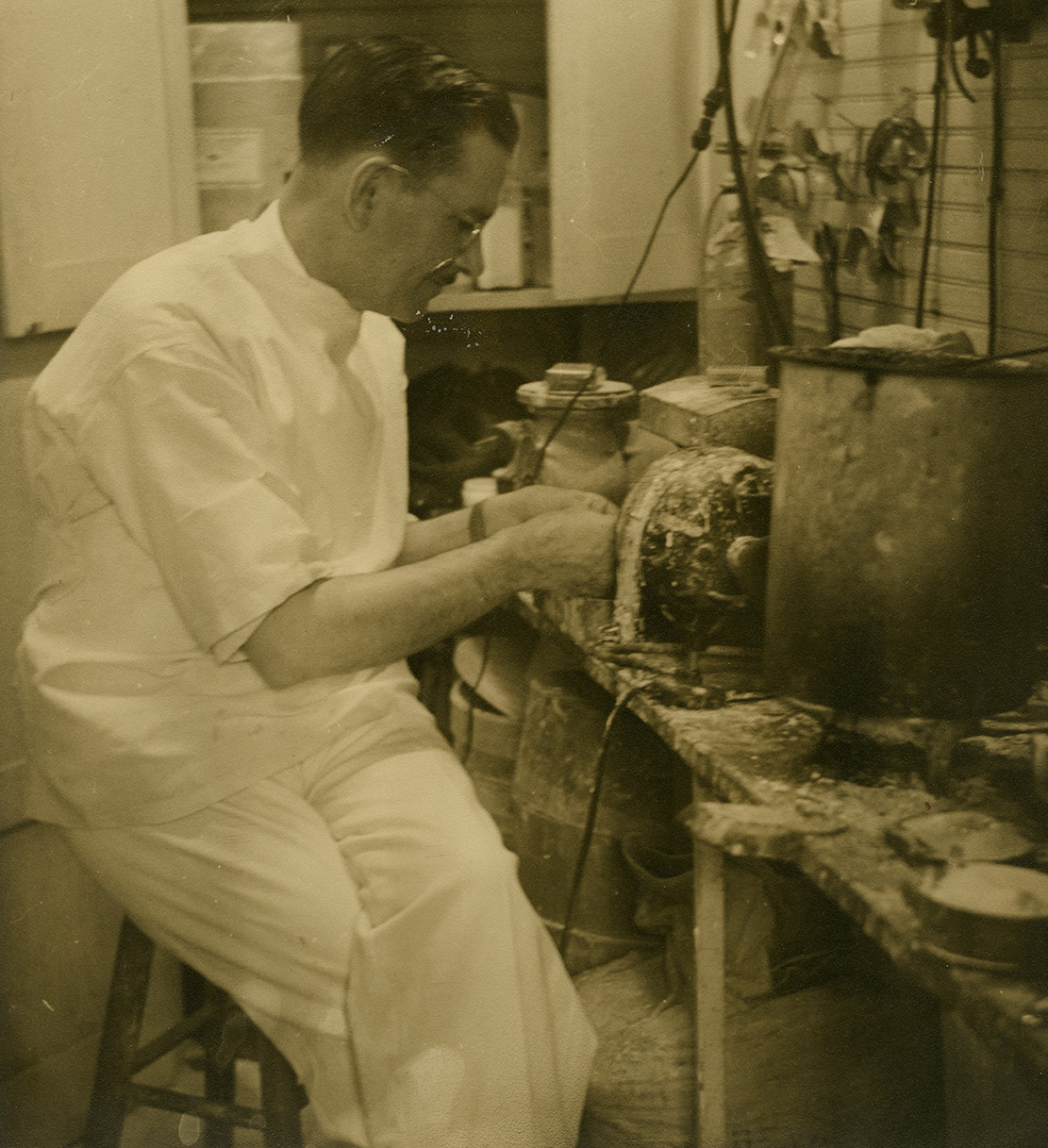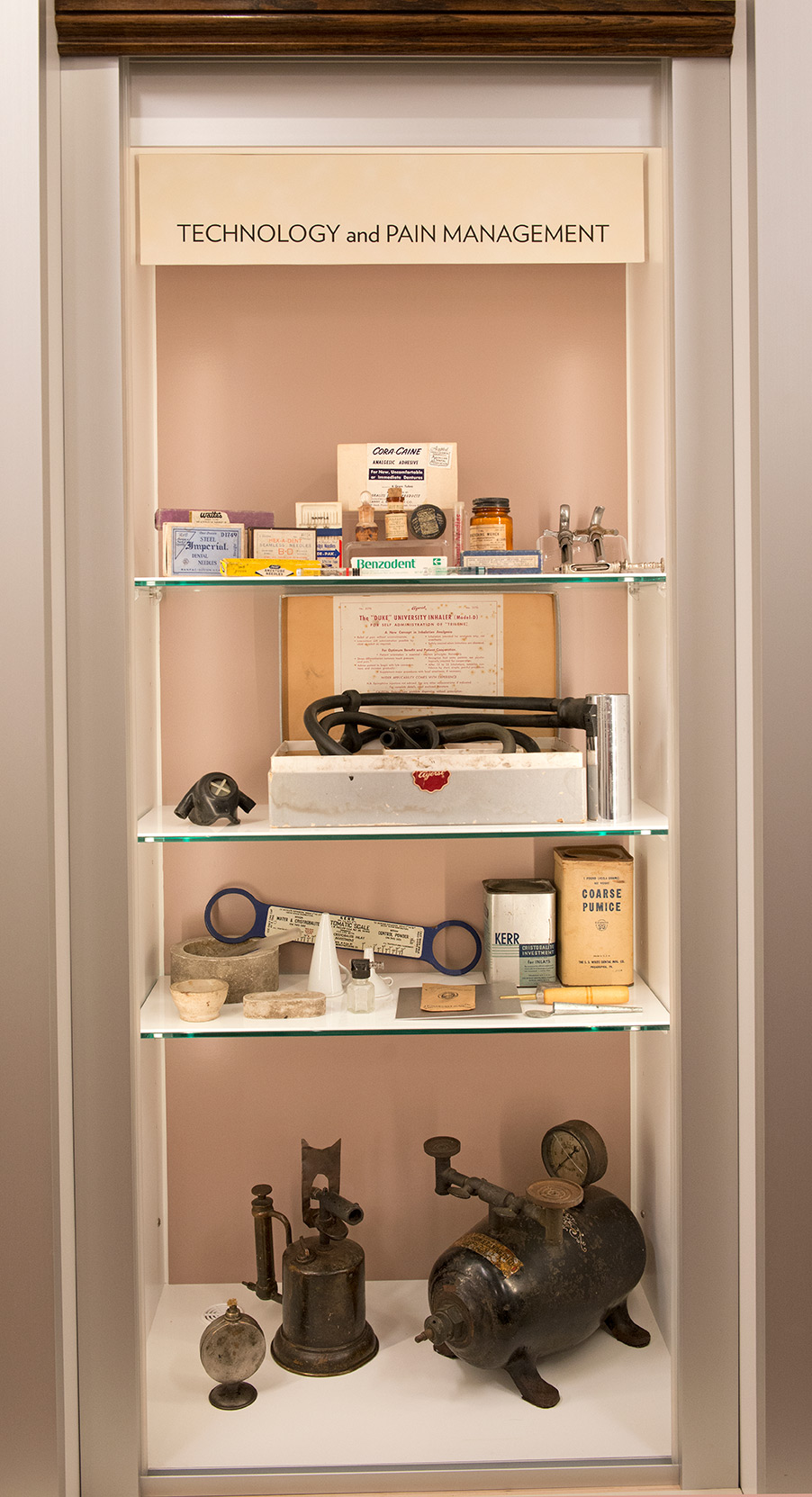

Sponsored by: Dr. Julian Hal Fair III
 In addition to extracting, restoring, and replacing teeth, dentists often did their own
laboratory work, which included making dental appliances such as dentures, bridges, and crowns, as discussed elsewhere. In addition, they became experts in the use of radiography (the taking, processing, and reading of dental x-rays), the preparation of filling materials, and the operation of safe and sterile workplaces.
In addition to extracting, restoring, and replacing teeth, dentists often did their own
laboratory work, which included making dental appliances such as dentures, bridges, and crowns, as discussed elsewhere. In addition, they became experts in the use of radiography (the taking, processing, and reading of dental x-rays), the preparation of filling materials, and the operation of safe and sterile workplaces.
Beginning in the late 19th century, some dentists elected to accept laboratory work for other dentists, eventually creating dental laboratories for the commercial preparation of dental appliances exclusively for other practicing dentists. The first dental laboratory established from a dental practice was that of Stowe and Eddy in Boston. In South Carolina numerous dental laboratories provide dental prosthetics. The oldest continuously operating dental lab in the state is Sherer Dental Laboratory in Rock Hill.
ATOMIZERS
Atomizers emit a fine continuous spray of water, alcohol, topical anesthetic, disinfectant or any other liquid. While at one time they were widely used, they have long since been replaced by built-in water and air hoses which are connected to the dental unit and may be temperature controlled.
BURNERS
These burners were used for heating dental impressions or other temporary filling materials and for sterilizing instruments. Alcohol was burned if gold leaf was used as a restorative. Other burners might use gasoline or natural gas.
STERILIZER
As the germ theory became more widely understood and accepted, dentists adopted practices to ensure a sterile work environment. The use of rubber gloves, masks, dental dams, and other protective gear minimized the chance of exchanging germs between doctor and patient. Another important tool was the sterilizer, seen here, into which metal hand instruments were placed for disinfection. This Pelton Oil Sterilizer, which heated oil to 175 degrees Celsius, was popular in the first two decades of the 20th century. By the 1950s, alternatives, which used steam under pressure or high heat, replaced oil sterilizers.
X-RAY SAFETY
As the effects of prolonged exposure to the radiation produced when using x-rays was better understood, efforts were made to reduce that exposure for dental practitioners and patients alike. This spring timer precisely controlled the time of exposure needed to obtain a useable x-ray. On the back of the timer is a chart to calculate exposures for adult and child patients. Today lead-lined aprons and other barriers are used to protect patients and staff from exposure to radiation from x-rays.
X-RAY
The discovery of x-rays and their application as a diagnostic tool changed the practice of dentistry. Wilhelm Conrad Röntgen discovered x-rays in 1895 at Wuerzburg University in Germany. The very next year Dr. Charles E. Kells became the first dentist use x-rays in his office in New Orleans. In 1901 he displayed his equipment and technique at the annual meeting of the Southern Dental Association in Asheville, North Carolina. In 1920, the Ritter Company produced its Model A Dental X-Ray to meet demand for the new technology. Unfortunately, the Model A posed a significant risk of shock to both the patient and doctor because of the exposed high voltage wire which ran outside the arm from the transformer in the cabinet to the head. Later, Ritter issued the Model B, which was marketed as “shock-proof.” The unit at left is a Ritter Model A.
Early x-ray film was made using a nitrate-cellulose base, which is highly flammable; by 1933 most dental x-ray films were made with a non-flammable acetate base and were referred to as “safety films.” Dentists or their assistants used wooden boxes like the one above, and shown at right, to protect exposed dental film before processing. Using traditional photographic film developing techniques, the exposed film was immersed in developer, then water, and then finally into a fixer bath, after which the image would be revealed. Today dentists are moving to digital x-rays which eliminates the need for any film at all.

